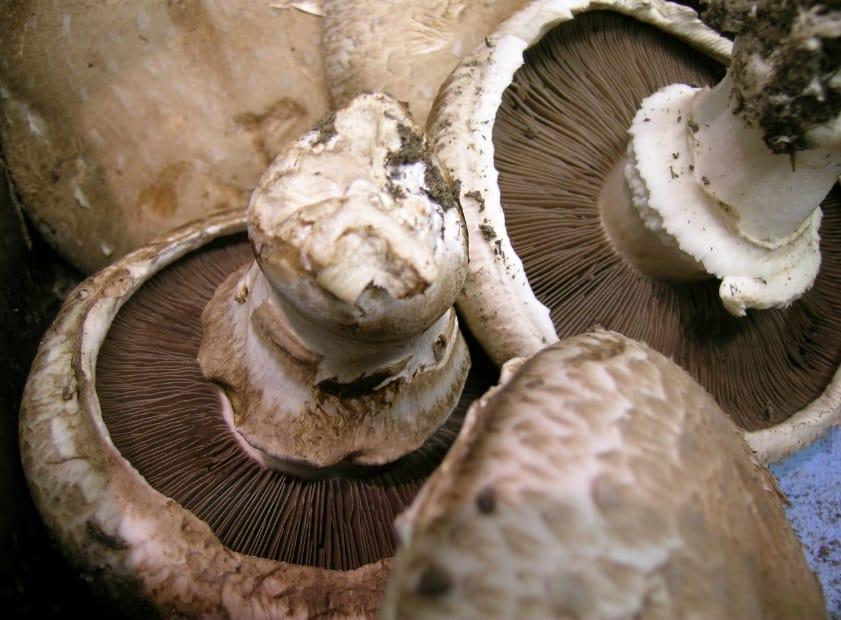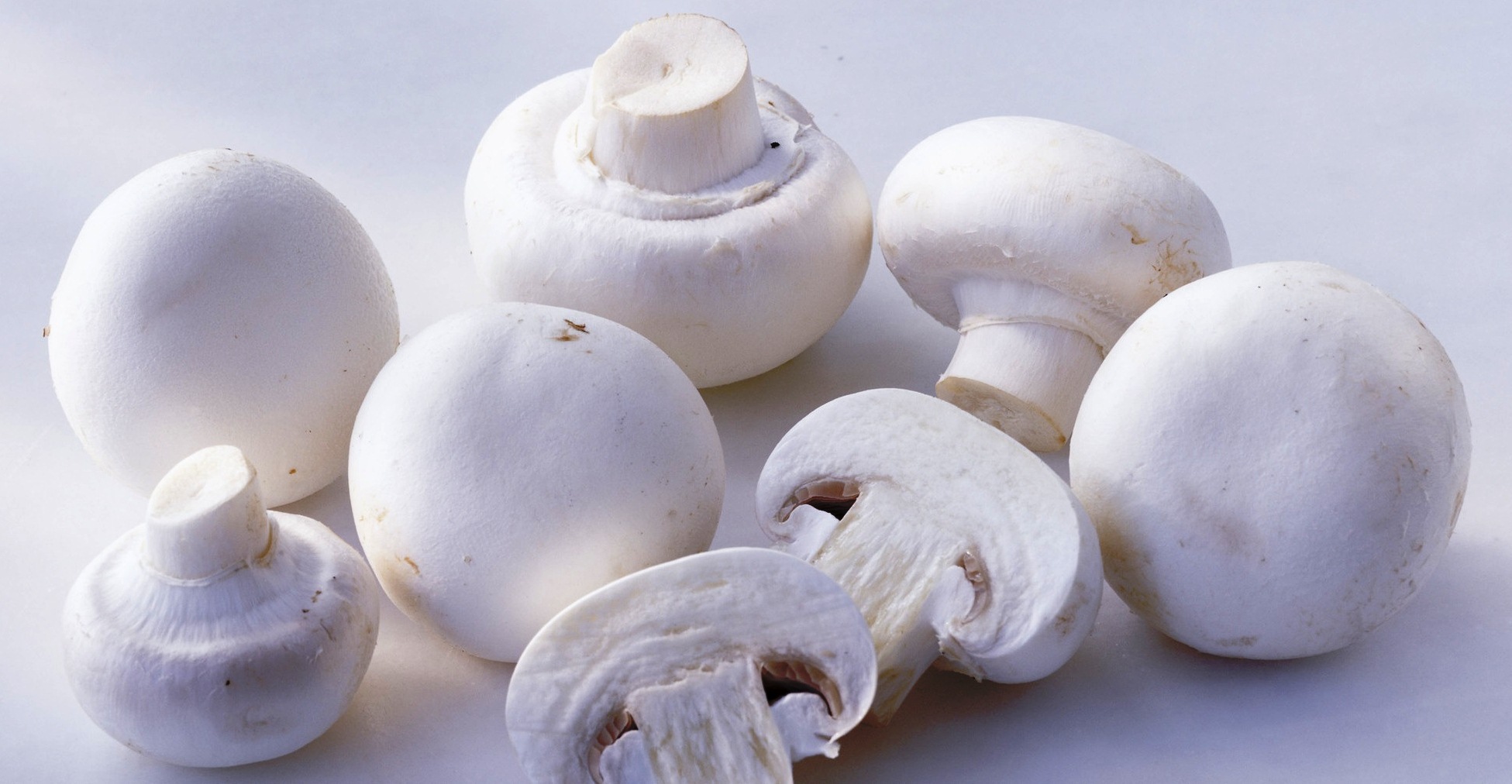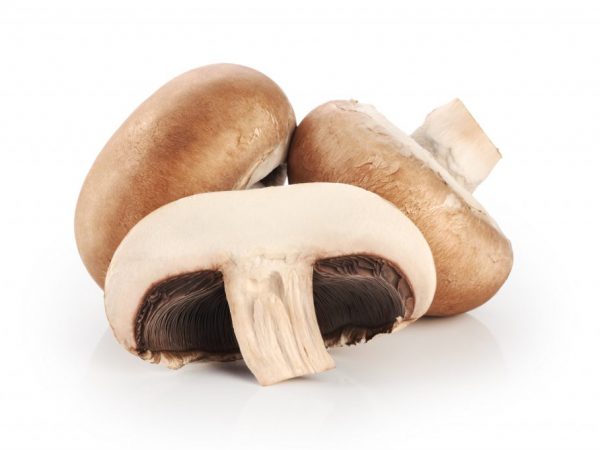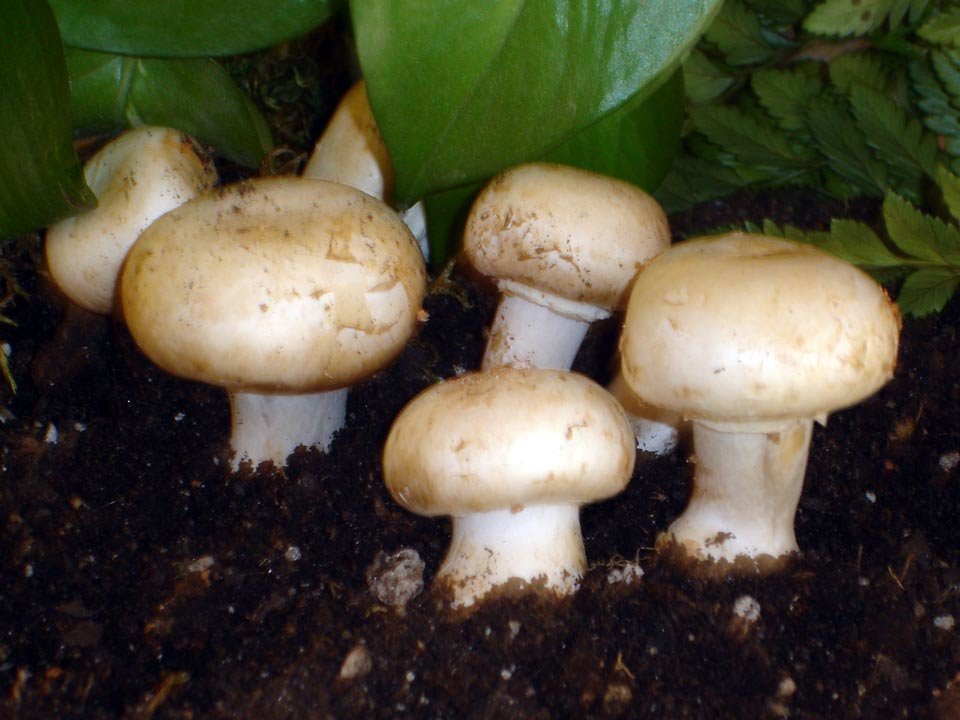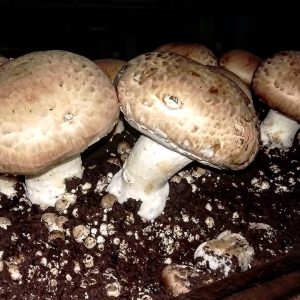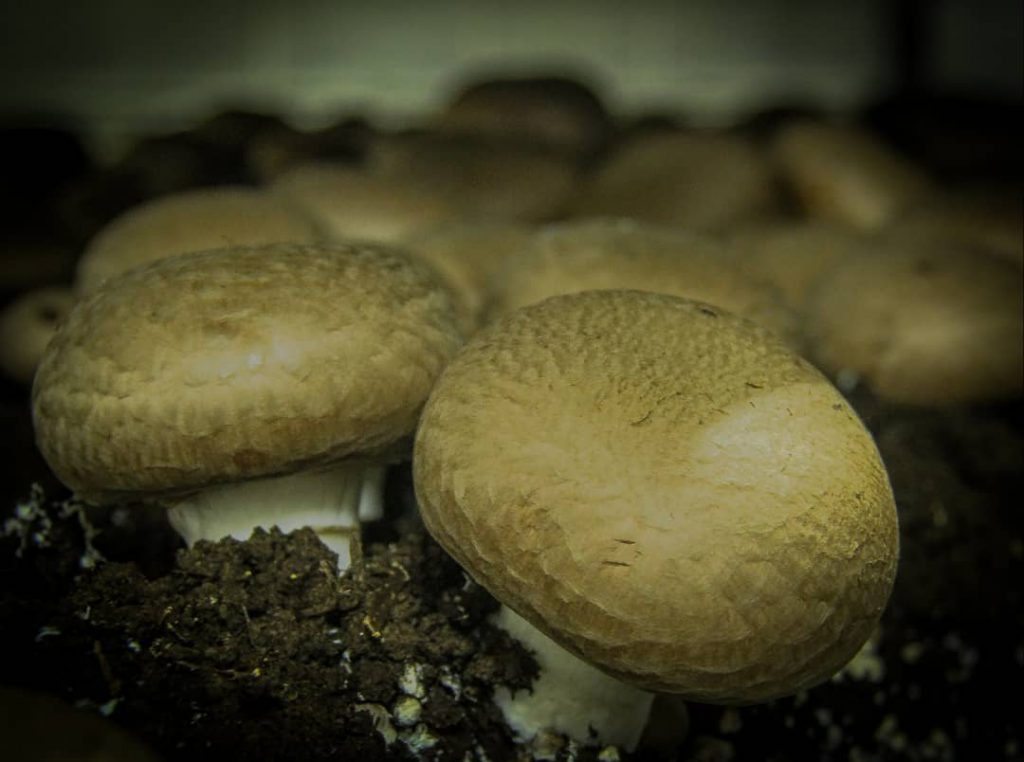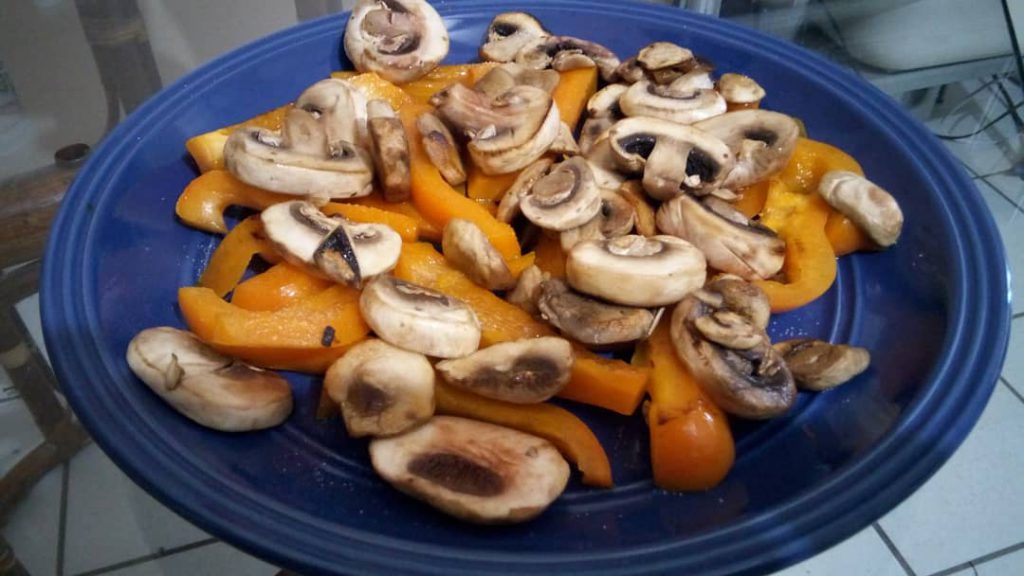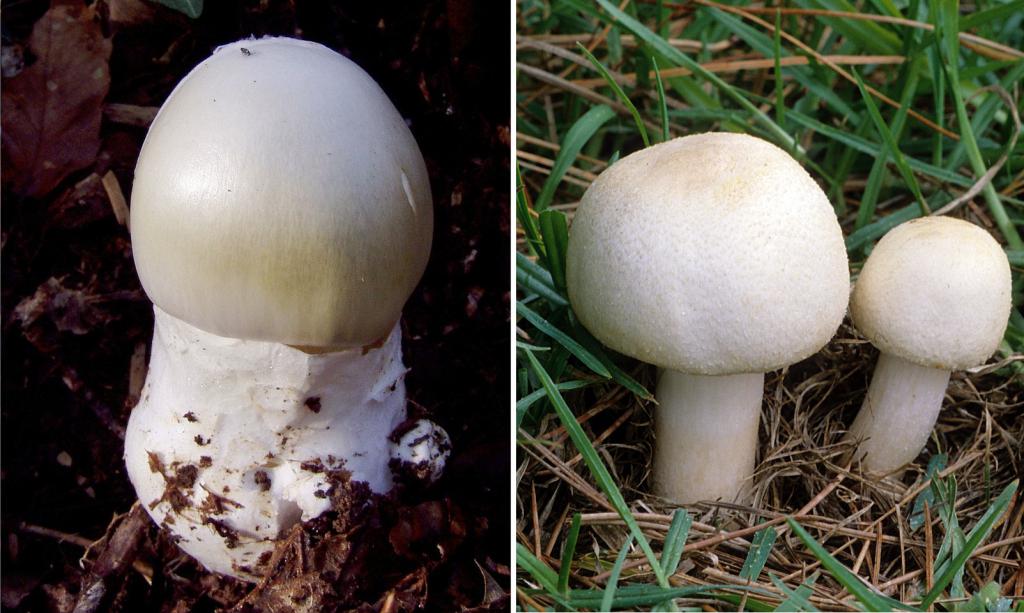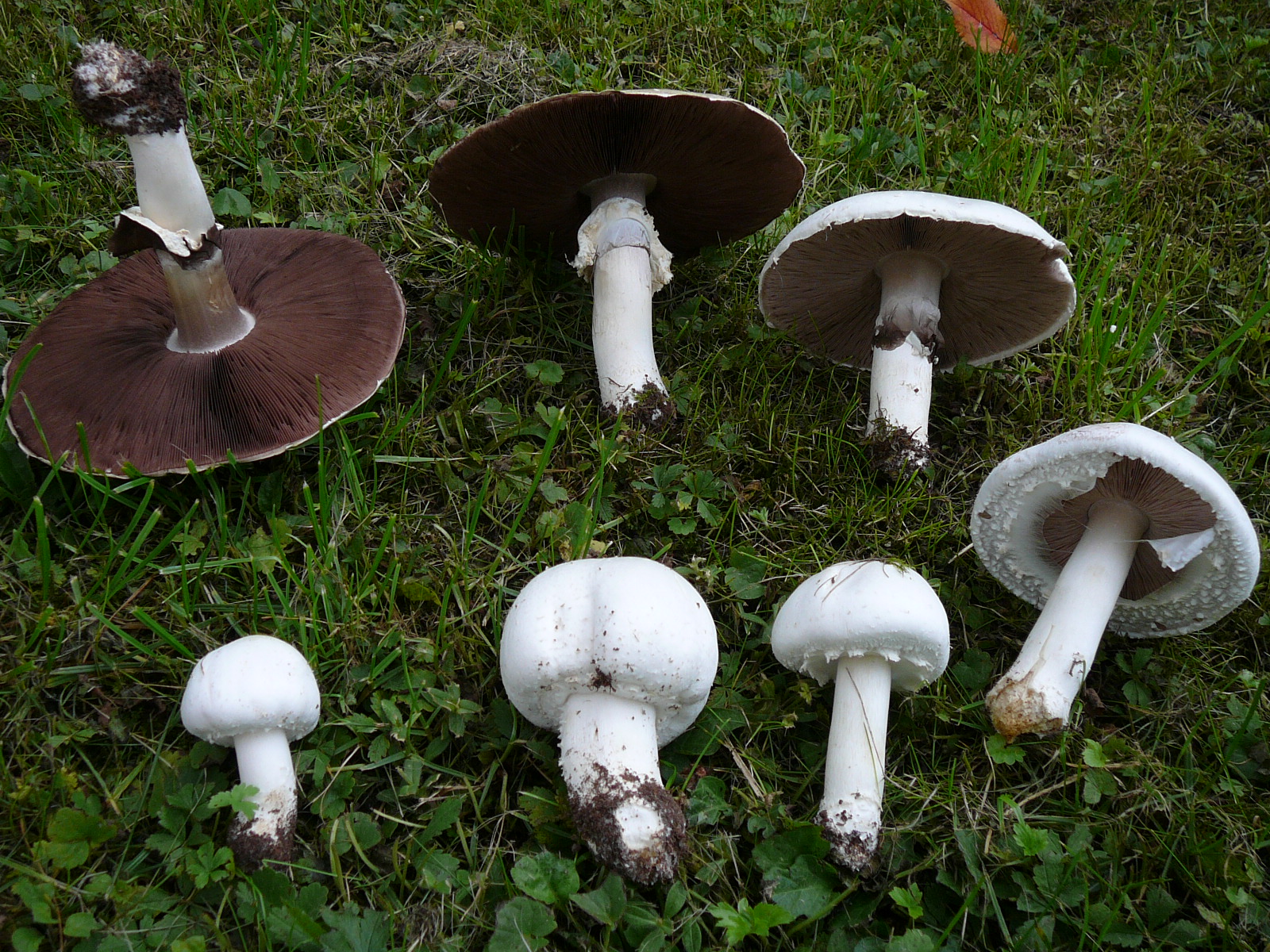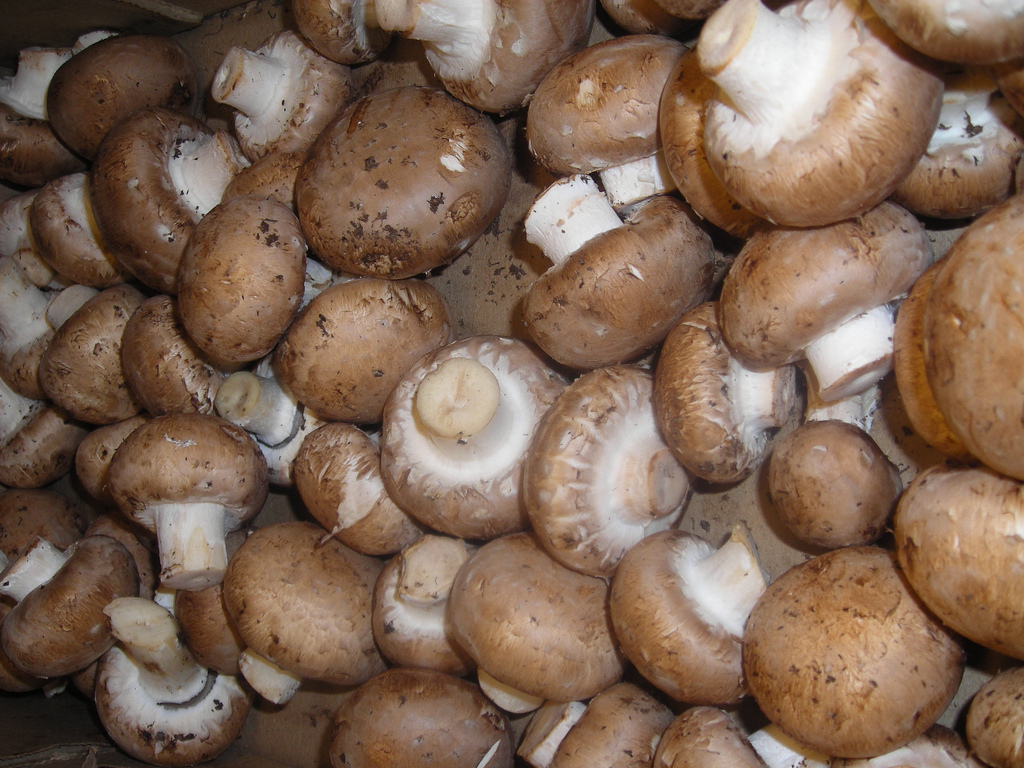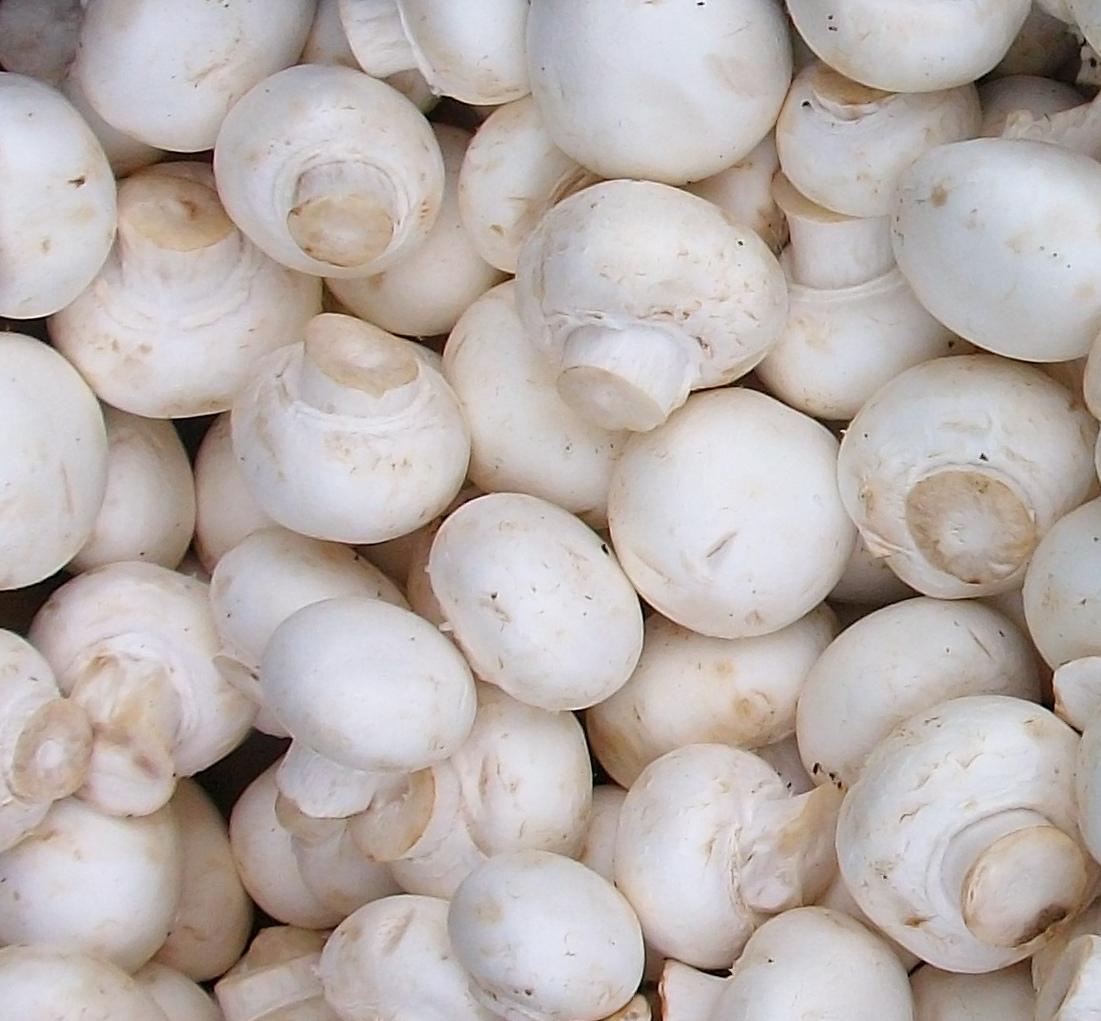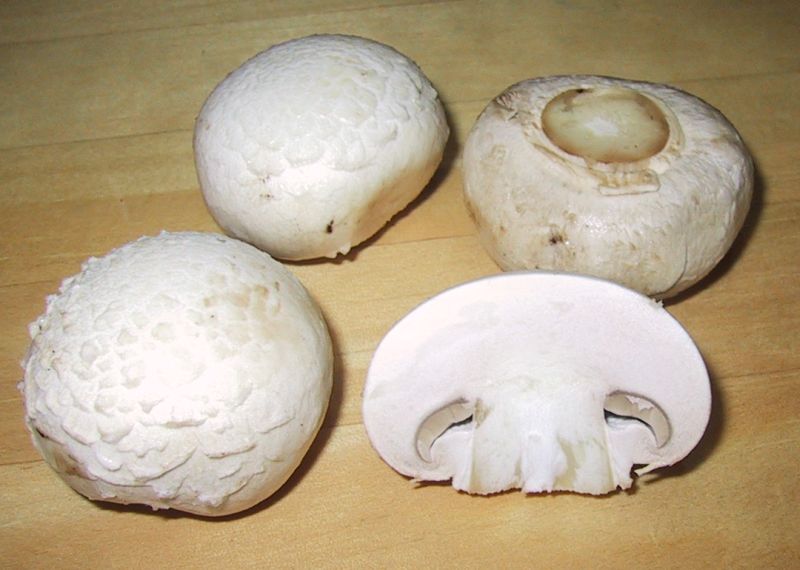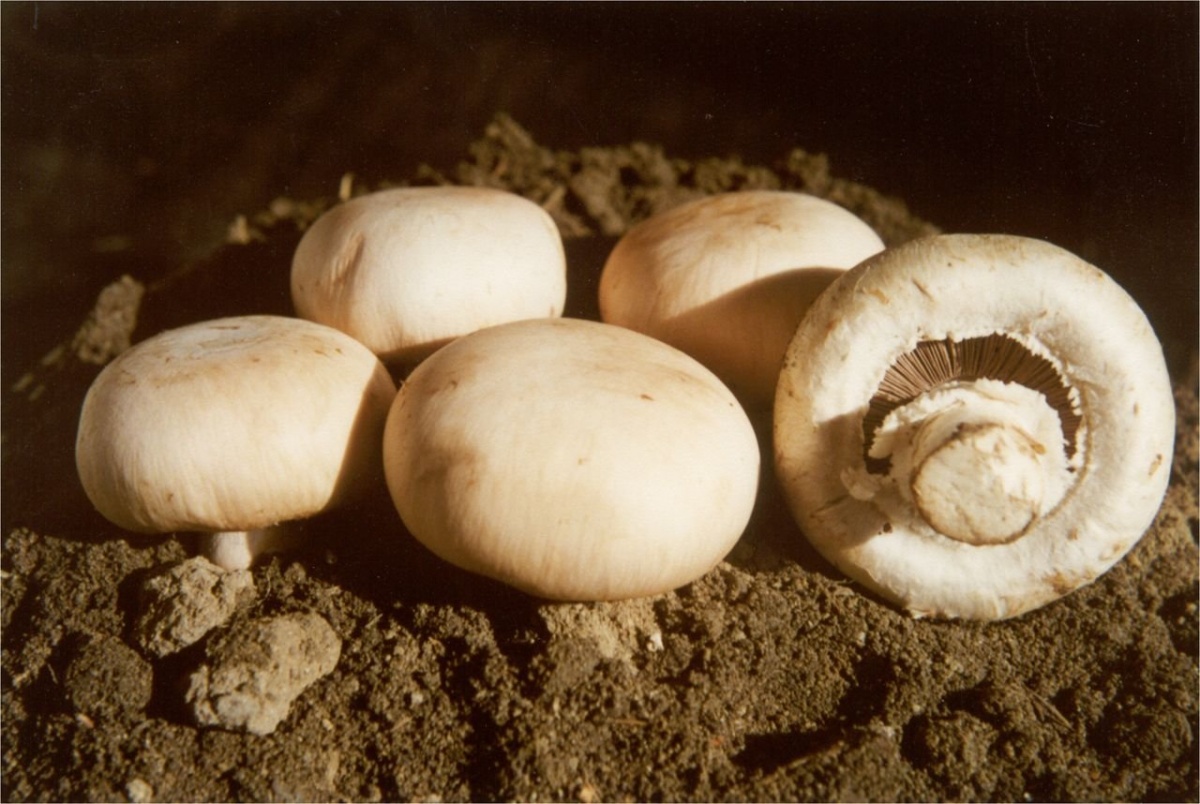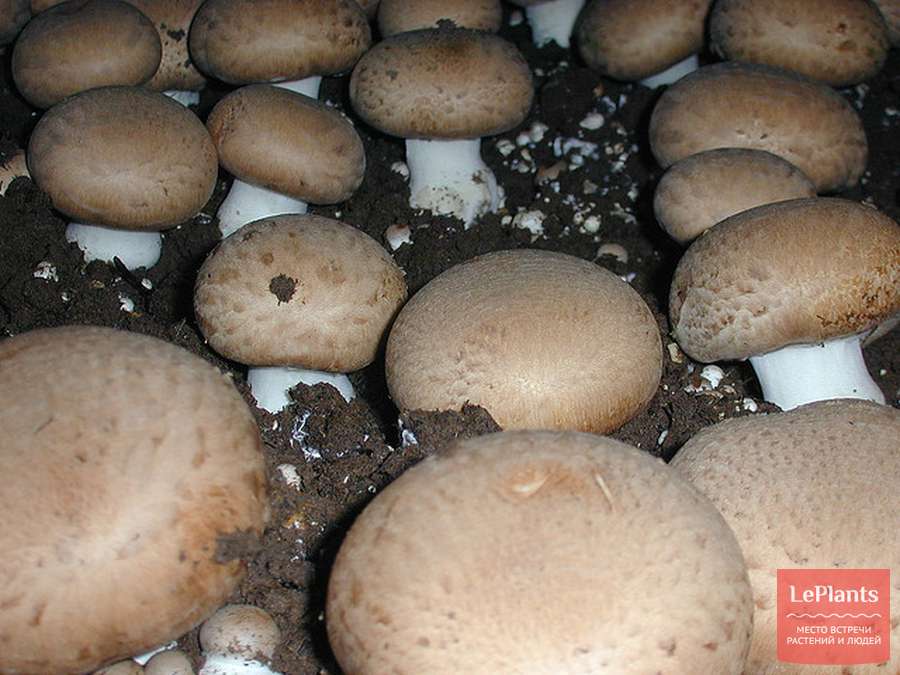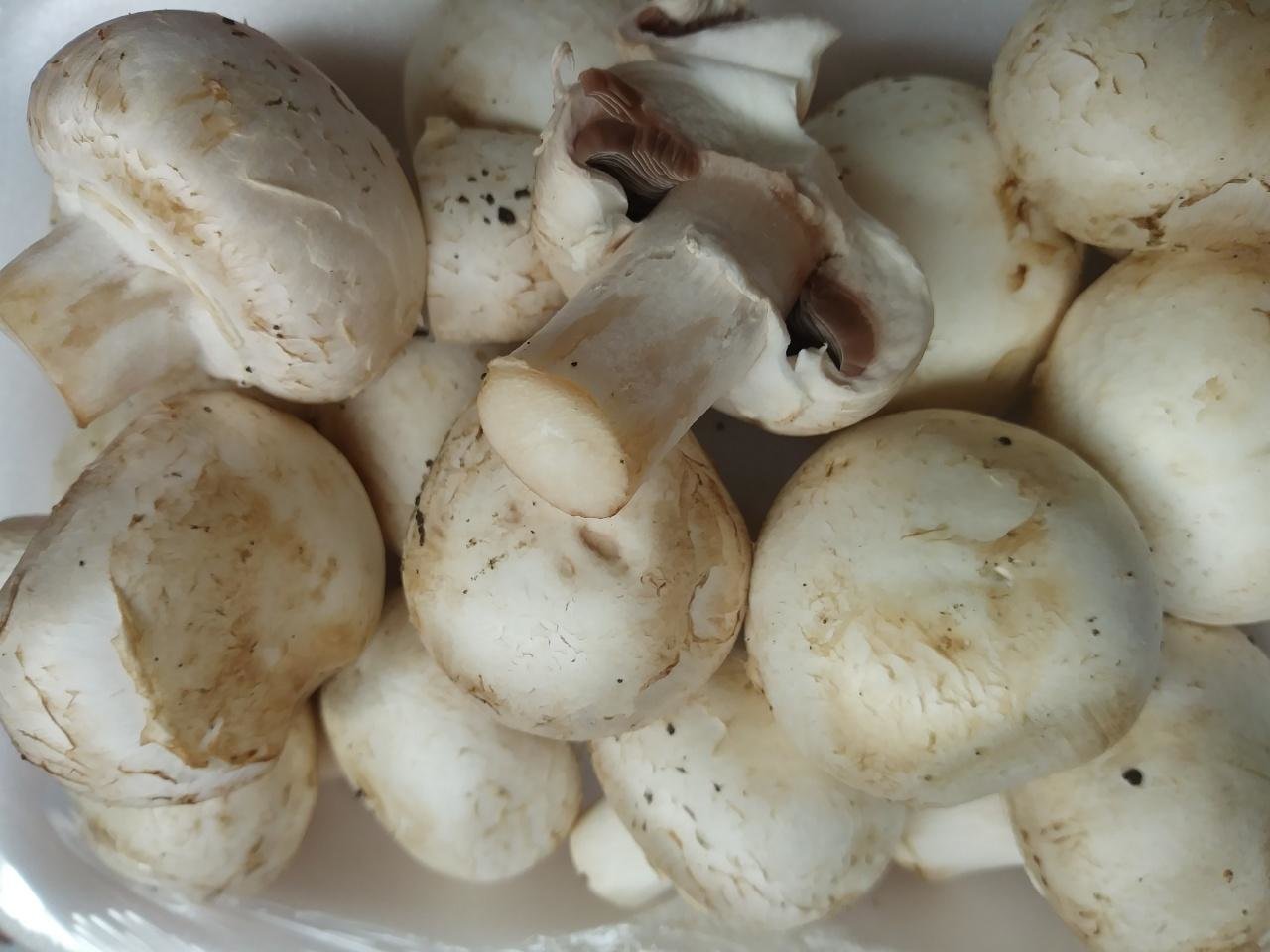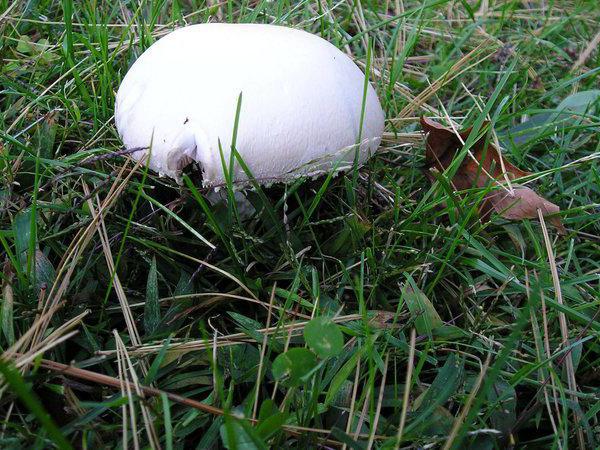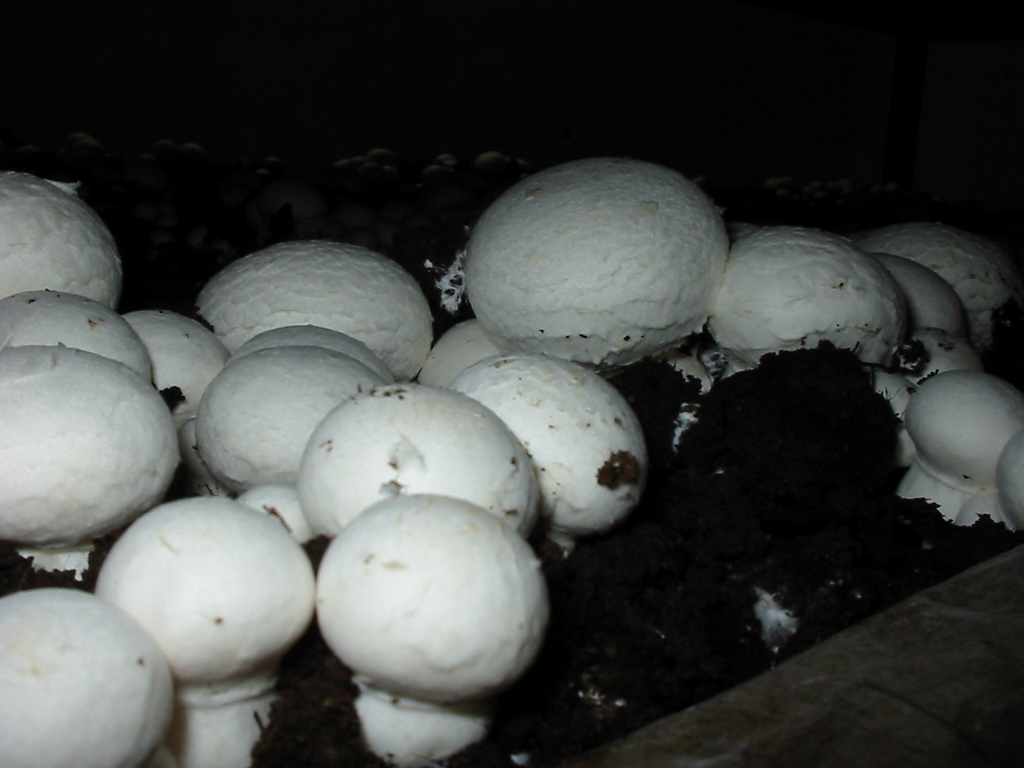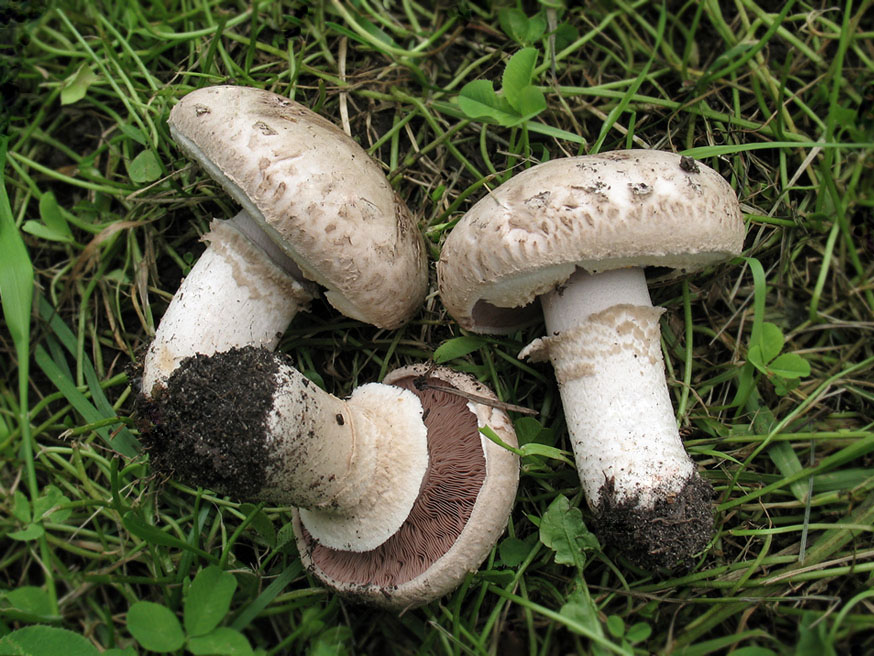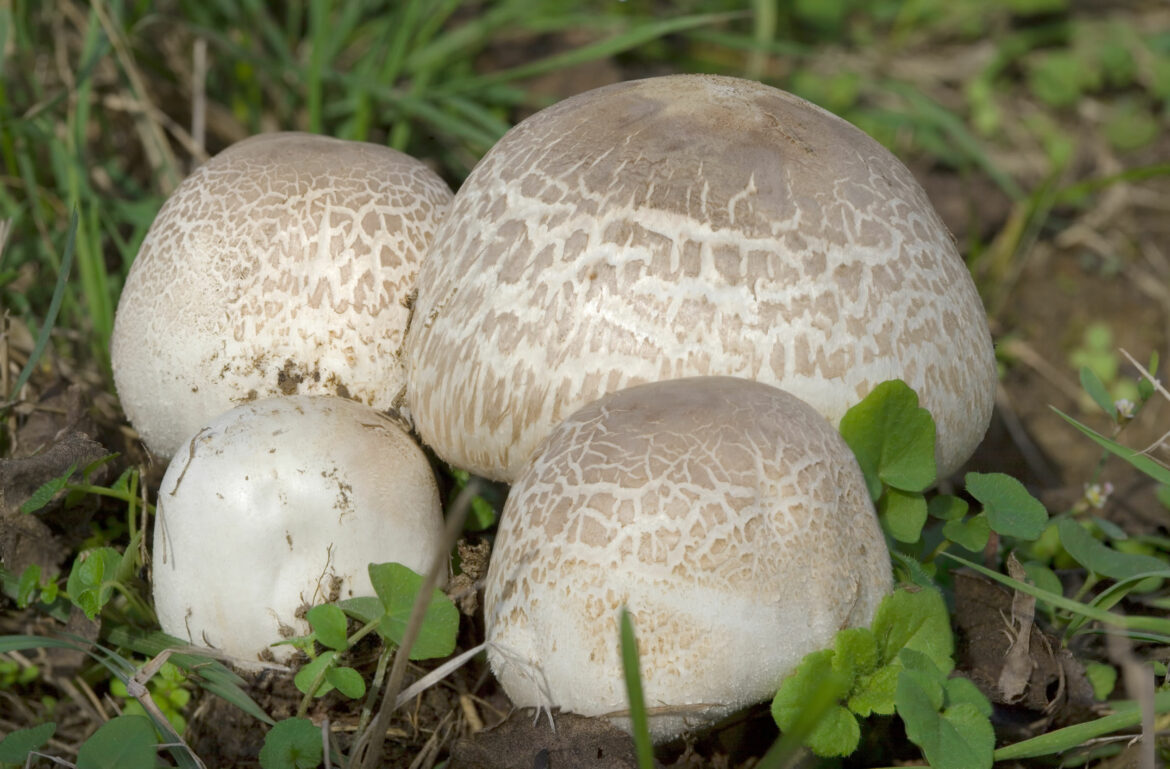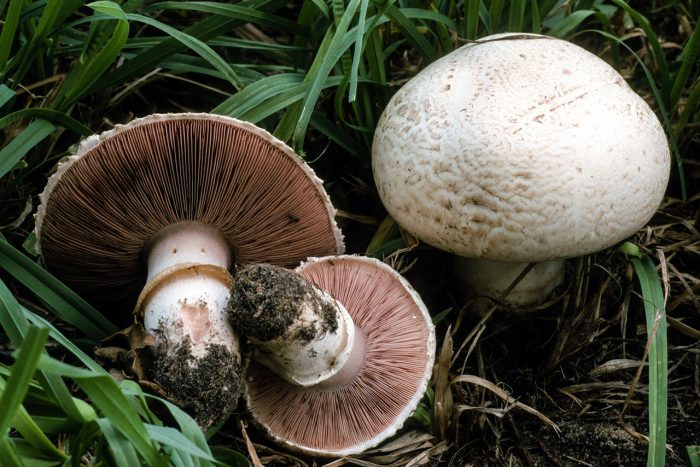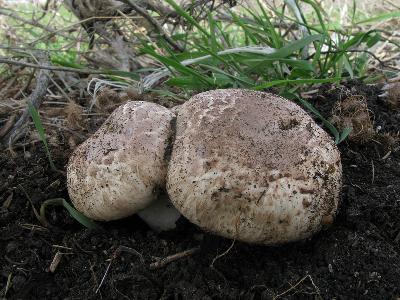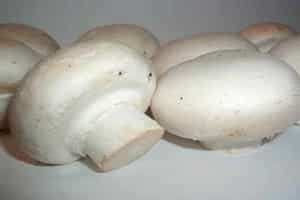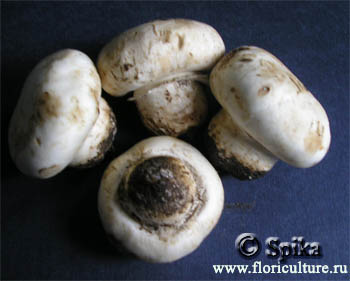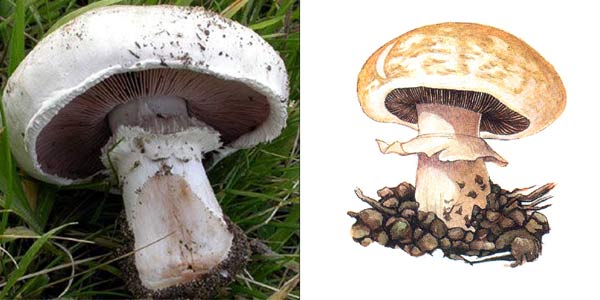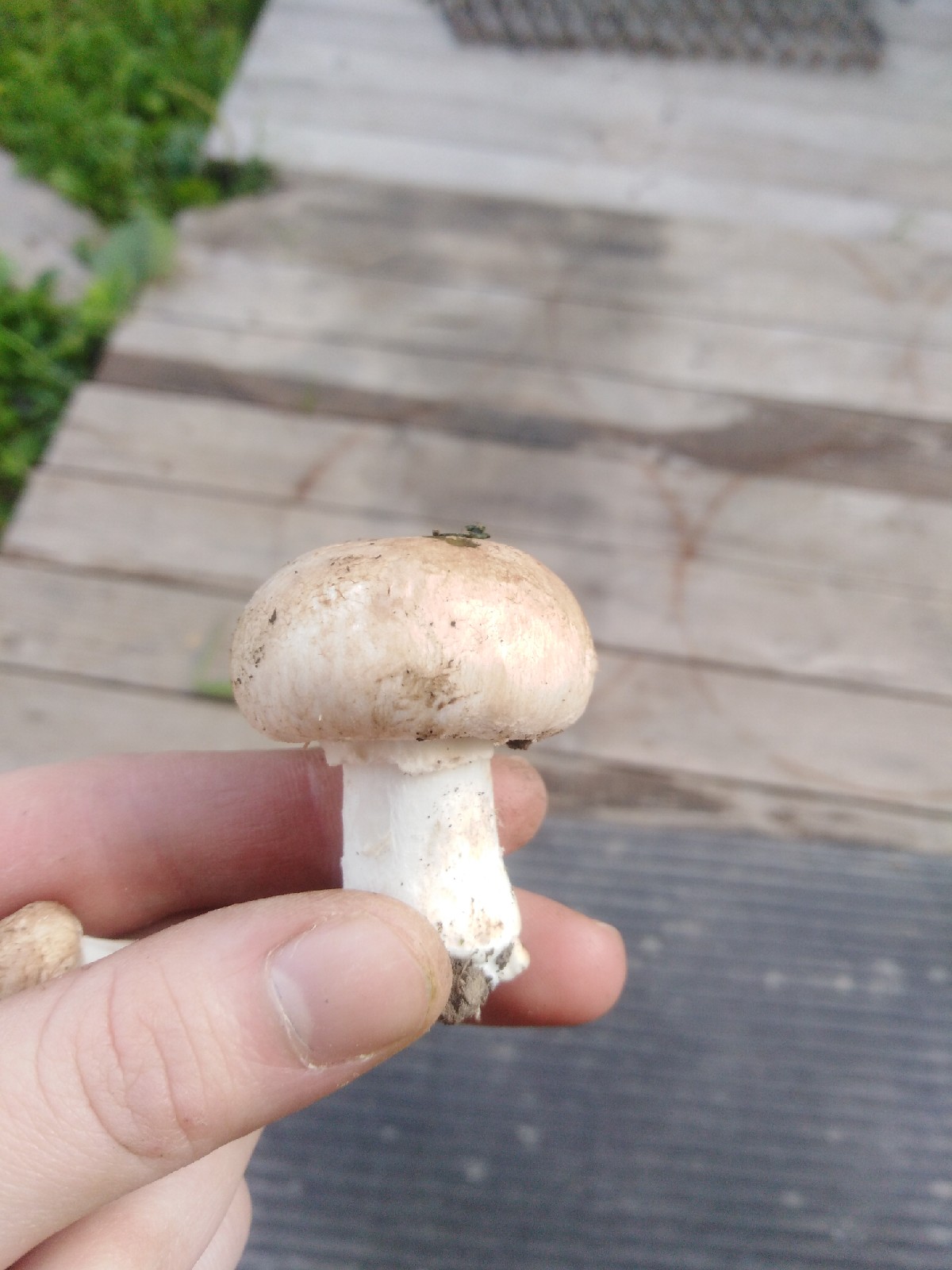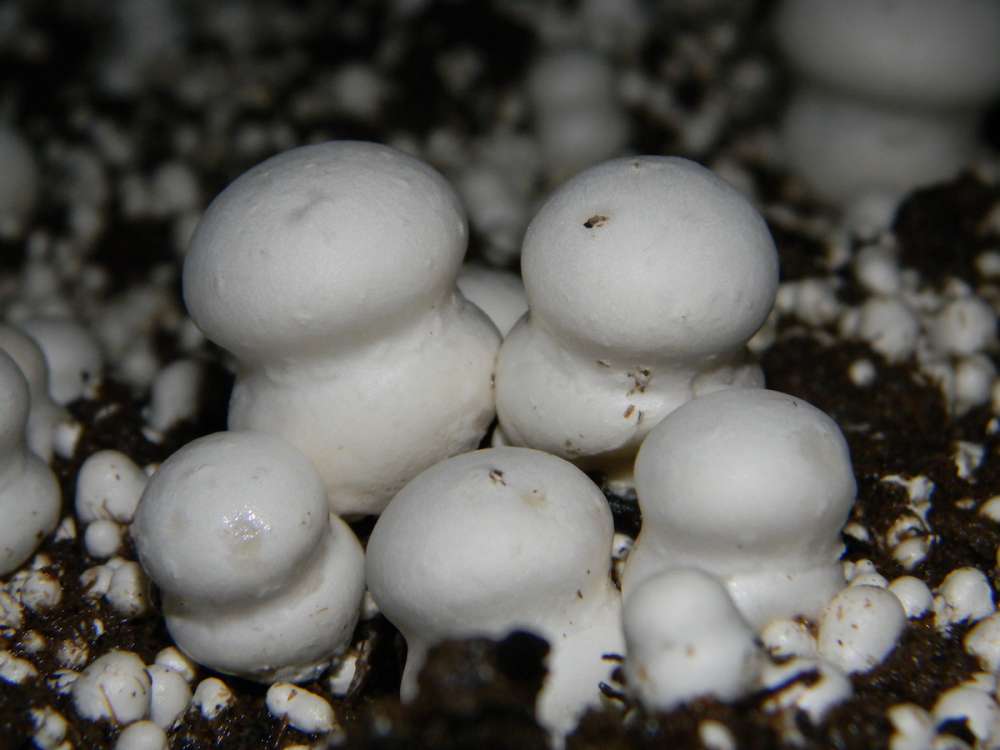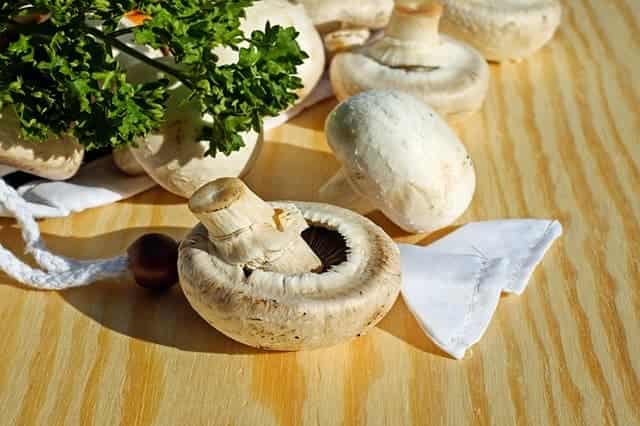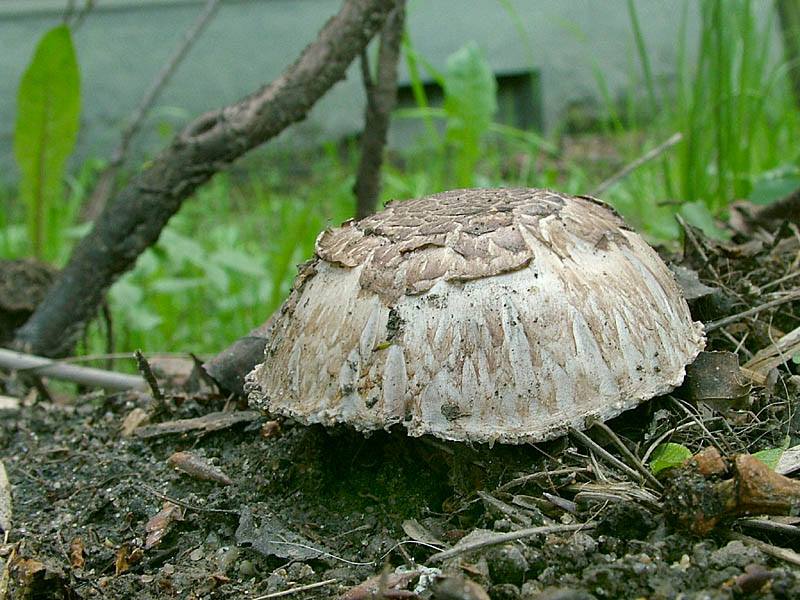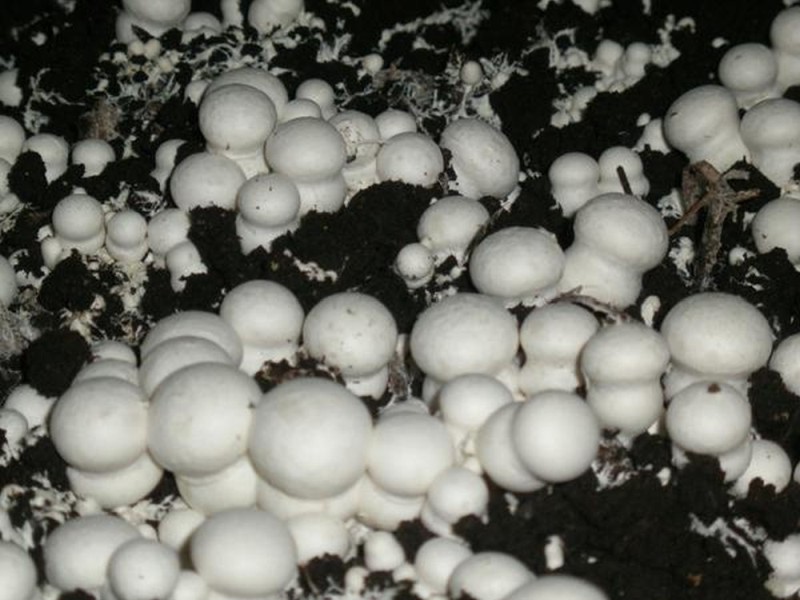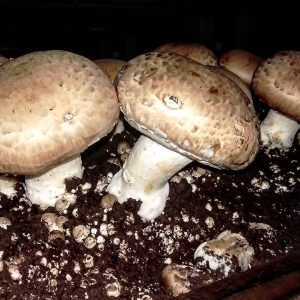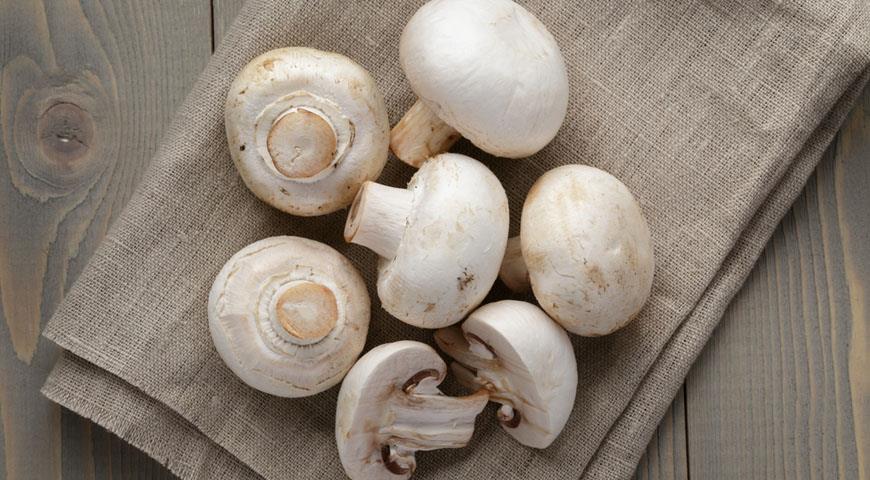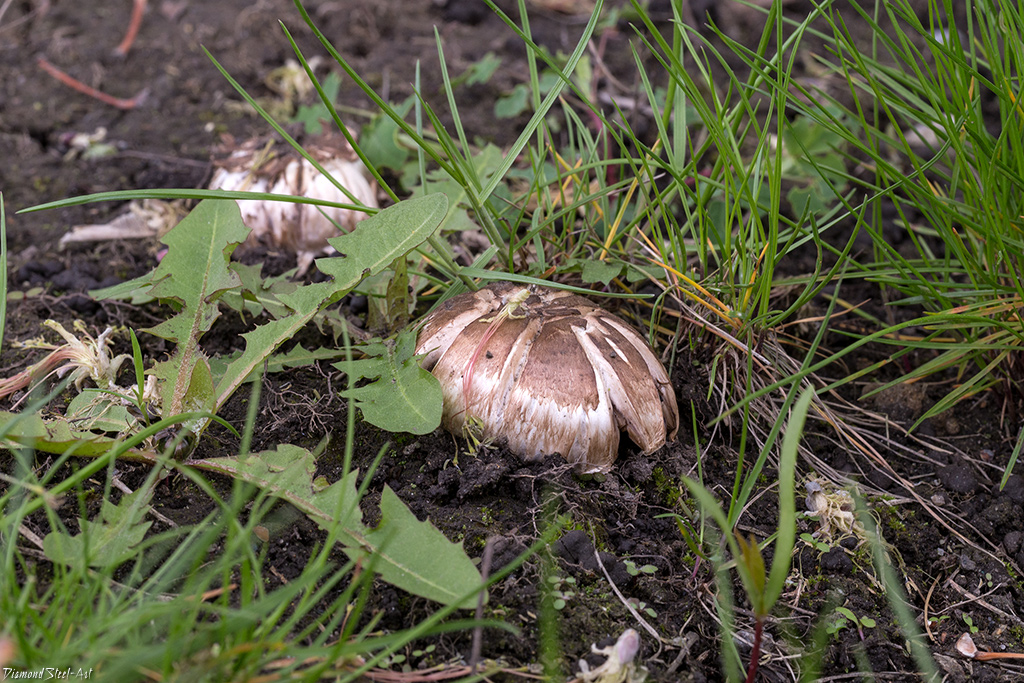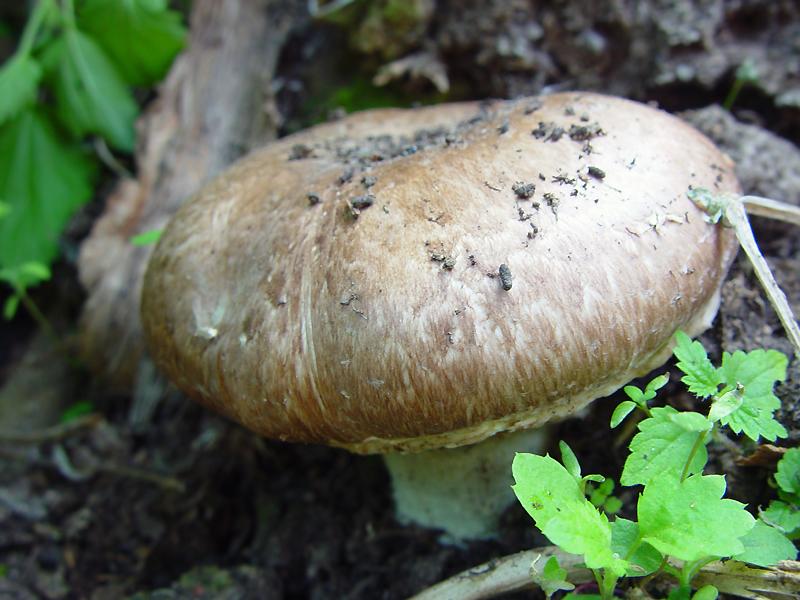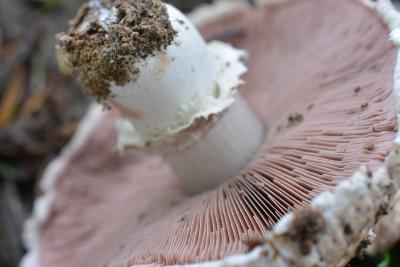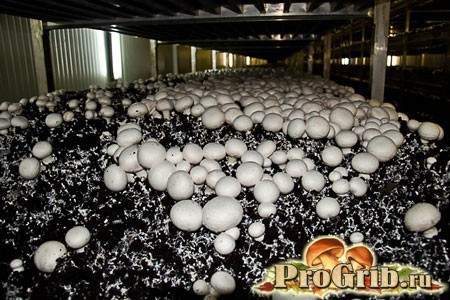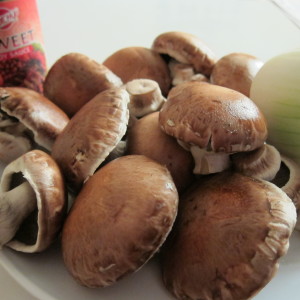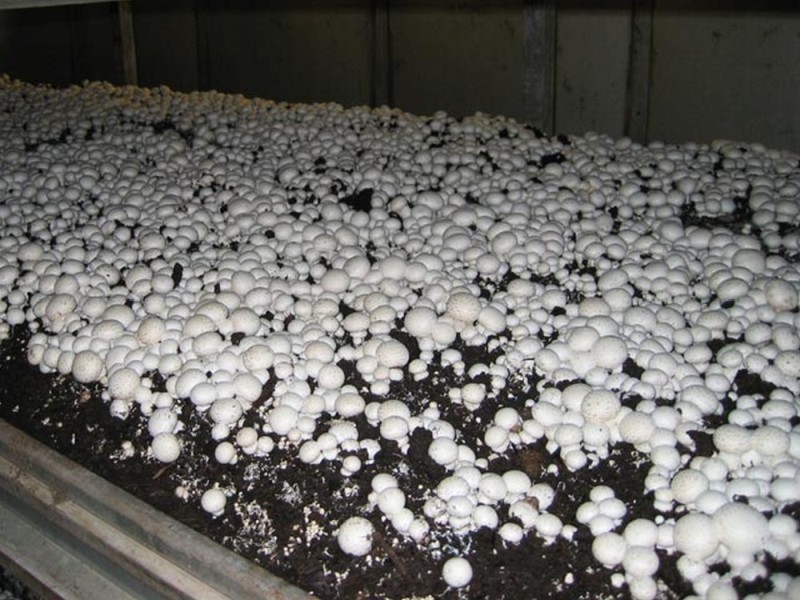Yellow-skinned champignon (Agaricus xanthodermus)
- Other names for the mushroom:
- Red champignon
- Yellow-skinned peasant
Synonyms:
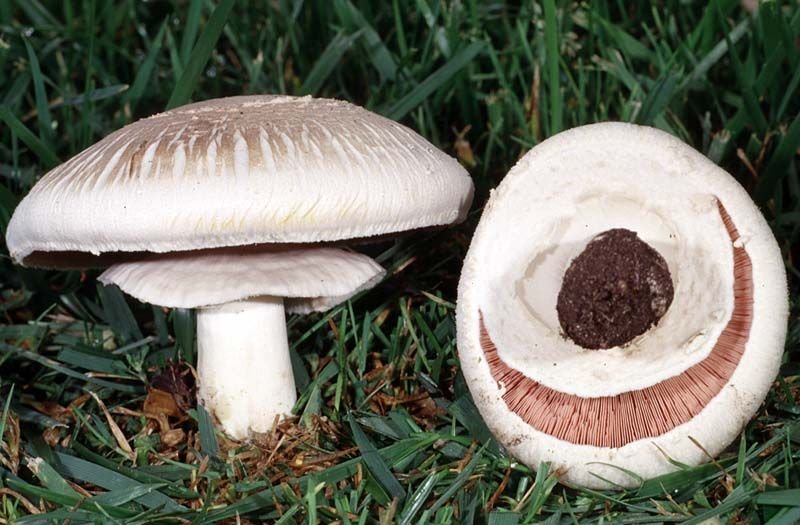
Description: Yellow-skinned champignon is also called yellow-skinned peppermint. The fungus is very poisonous, poisoning with it leads to vomiting and numerous disorders in the body. The danger of the peppers lies in the fact that in their appearance it is very similar to many edible mushrooms, which, for example, are edible champignons.
The yellow-skinned peasant is decorated with a yellow-skinned white cap with a brownish blotch in the center. When pressed, the cap becomes yellowish. Mature mushrooms have a bell-shaped cap, while young mushrooms have a rather large and rounded cap, reaching fifteen centimeters in diameter.
The plates are at first white or pinkish; with age, the fungus turns gray-brown.
The leg is 6-15 cm long and up to 1-2 cm in diameter, white, hollow, tuberous-thickened at the base with a wide white, thickened along the edge of the two-layer ring.
The brownish-colored flesh at the base of the leg turns yellow quite strongly. During heat treatment, the pulp emits an unpleasant, intensifying phenolic odor.
The emerging spore powder is dark brown in color.
Spreading:
Yellow-skinned champignon bears fruit actively in summer and autumn. It appears especially in abundant quantities after rains. It is found not only in mixed forests, but also in parks, in gardens, in all areas overgrown with grass. This type of mushroom is widespread throughout the world.
Habitat: from July to early October in deciduous forests, parks, gardens, meadows.
Grade:
The fungus is poisonous and causes stomach upset.
The chemical composition of this mushroom is currently not established, but, despite this, the mushroom is used in folk medicine.
Video about the yellow-skinned champignon mushroom:
Note: The distinguishing features of the yellow-skinned champignon from the edible mushroom are its yellowing places when touched and an unpleasant phenolic odor emitted.
Professional mushroom pickers easily distinguish yellow-skinned champignon from edible types of mushrooms, knowing its signs. But inexperienced amateurs mushroom pickers need to recognize and distinguish the distinguishing features of this poisonous mushroom. A mushroom mistakenly eaten will cause poisoning, albeit mild, but quite unpleasant for a person.
The name comes from "xanthos" (Greek) - yellow and "derma" (Greek) - leather.
Nutritional properties
| Raw mushroomNutritional value per 100 g of product | |||||||||||||||||||||||||||||||||||||||||||||||||
|---|---|---|---|---|---|---|---|---|---|---|---|---|---|---|---|---|---|---|---|---|---|---|---|---|---|---|---|---|---|---|---|---|---|---|---|---|---|---|---|---|---|---|---|---|---|---|---|---|---|
| Energy value 22 kcal 93 kJ | |||||||||||||||||||||||||||||||||||||||||||||||||
|
Champignon is considered a valuable edible mushroom, it is used fresh, for frying, cooking, stewing, canning, making salads, pickling.
Dried mushrooms and powder from them are used for making pies, soups, etc.
Two-ring champignon
Among the champignons there are also their own "pitching", for example, the two-ring champignon (Agaricus bitorquis). Not only does it prefer to grow on compacted soil, in some cases the asphalt can also lift. Although this is not so much a plus for the mushroom as a minus for the asphalt.
Accordingly, it grows large - the cap is 6-12 cm in diameter, the leg is thick. A hat cannot be a ball, it opens even inside the soil. Therefore, there is almost always any rubbish on the hats.The color of the cap is white or brownish, the plates are pink in youth and chocolate brown in adulthood. The flesh of the cap is rather thick, dirty white at the break, slightly turning pink. Two rings are clearly visible on the leg, apparently, his bedspread was originally with a frill. The smell of mushroom, pleasant.
It is also a tasty mushroom and quite common: it grows on the roadsides, on grazing cattle, in gardens, it feels quite comfortable within the city. And bears fruit from spring to autumn.
This type of champignon, like the common one, is actively cultivated.
There is also a similar cultivated species - the double-pore champignon (Agaricus bisporus), which can be distinguished by the double ring on the leg of the two-ringed and "scaly" surface of the adult double-pore cap. The littered two-ring hats make identification difficult, though.
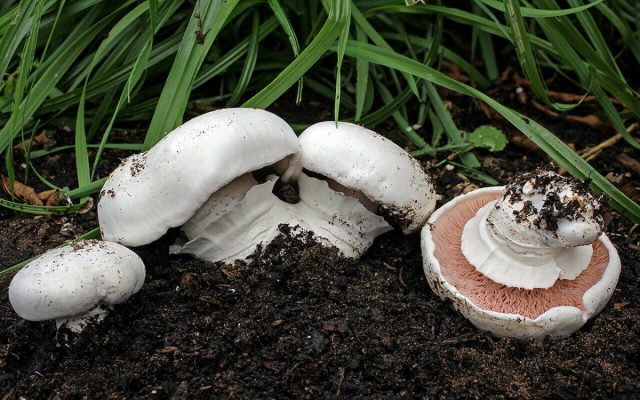 Two-ring champignon (Agaricus bitorquis). yosefebrahimian
Two-ring champignon (Agaricus bitorquis). yosefebrahimian
Cossack champignon (Agaricus sylvicola)
Synonyms:
Coppice champignon (Latin Agaricus sylvicola) is a mushroom of the mushroom family (Agaricaceae).
Hat:
Color from white to cream, 5-10 cm in diameter, first spherical, then prostrate-convex. Scales are practically absent. The pulp is relatively thin, firm; anise smell, nutty taste. When pressed, the cap readily takes on a yellow-orange color.
Plates:
Frequent, thin, free, when the mushroom ripens, it gradually changes color from light pink to dark brown.
Spore powder:
Dark brown.
Leg:
5-10 cm high, thin, hollow, cylindrical, slightly widening at the base. The ring is strongly pronounced, white, can hang low, almost to the ground.
Spreading:
Coppice champignon grows singly and in groups in deciduous and coniferous forests from June to late September.
Similar species:
It would be a big mistake to mistake the pale toadstool (Amanita phalloides) for the champignon. This, one might say, is a classic of toxicology. Nevertheless, the main differences between champignons and representatives of the genus Amanita should be known to every young mushroom picker. In particular, the plates of the pale toadstool never change color, remain white until the end, while in champignons they gradually darken, from light cream at the beginning to almost black at the end of their life path. So if you find a small lonely champignon with white plates, leave it alone. This is a poisoned pale toadstool.
It is much easier to confuse Agaricus sylvicola with other members of the mushroom family. Agaricus arvensis is usually larger and does not grow in the forest, but grows in the fields, in gardens, in the grass. Poisonous Agaricus xanthodermus has a strong unpleasant odor (which is described differently everywhere - from carbolic acid to ink), and does not grow in the forest, but in the field. You can also confuse this species with the crooked champignon or, otherwise, "distinctly nodule" (Agaricus abruptibulbus), but the latter is somewhat thinner, higher, does not turn yellow so readily, and is less common.
Edibility:
Cossack Champignon - This is a good edible mushroom that rivals the best of champignons.
Video about mushroom champignon coppice
Remarks Still, it remains unclear how to distinguish between numerous similar types of champignons, even if professionals cannot agree on this. On the one hand, the mind prompts you to focus on the habitat. On the other hand, this is fully justified only for mycorrhizal fungi, and champignons, like all saprotrophs, in principle can grow everywhere, if there would be fertilization.
What false champignons look like: photo and description of the appearance of mushrooms
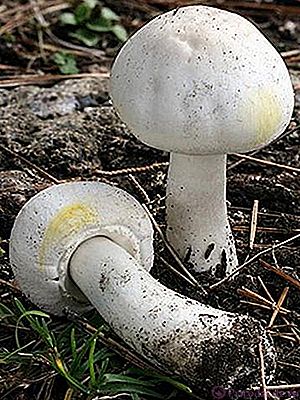

Most often, such representatives of the Agaric family are taken for edible specimens:
- Agaricus xanthodermus.
- Agaricus meleagris.
- Agaricus californicus.
Typical examples of false champignons are shown in the photo.
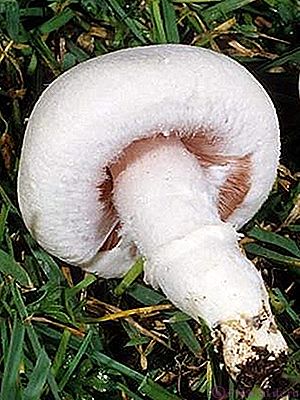
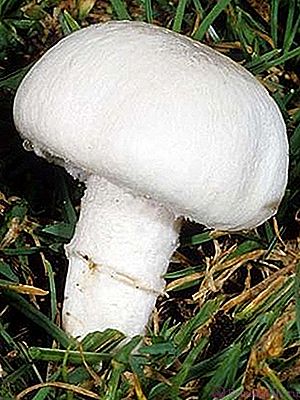
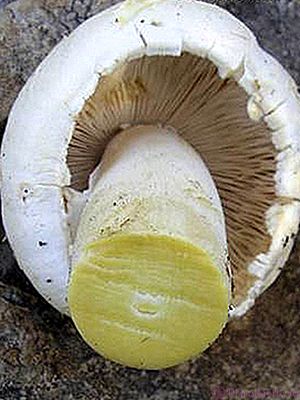

A number of features will help to distinguish such specimens from edible ones. On the cap, the poisonous twin has a speck of brown color, which is located in the center.If you press on it, light yellow spots will appear. But this method is not guaranteed, so it is better to use it in tandem with other traits.
When broken, the pulp of false forest and field mushrooms begins to turn yellow and smells unpleasant with carbolic acid, and during cooking, the water and the mushrooms themselves turn bright yellow for a short time, but this color quickly disappears. Long-term heat treatment will not be able to rid the product of toxins.
Take a look at the photo and study the description of the appearance of false forest mushrooms.
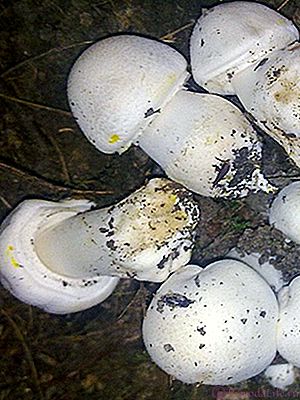
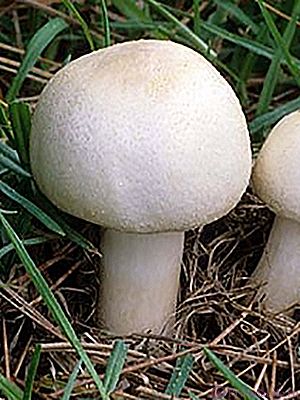
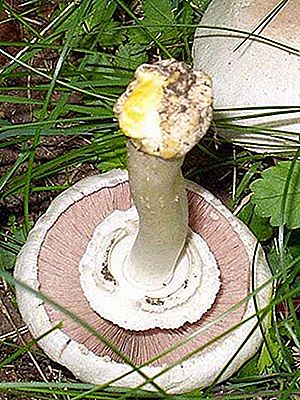
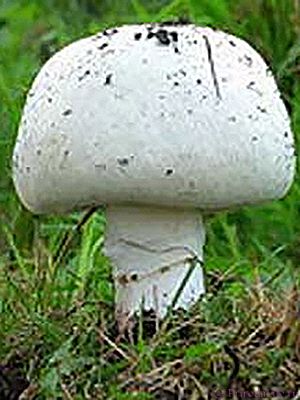
The color of the cap and its shape can change under the influence of the environment, therefore, special attention is paid to the pulp, its smell, shade and changes during cooking. Another mushroom that disguises itself as an edible is a pale toadstool.
Outwardly, it resembles a champignon, while it does not have a smell by which it could be recognized. There are volves (root sacs) at the base of the toadstool, but people don't always notice them. If you have the slightest doubt about the suitability of the mushroom, you should break the pulp and see if it turns yellow, and then check the color change of the water during cooking. This is one of the most accurate and proven ways to distinguish real edible champignons from false ones.
Another mushroom that disguises itself as an edible is a pale toadstool. Outwardly, it resembles a champignon, while it does not have a smell by which it could be recognized. There are volves (root sacs) at the base of the toadstool, but people don't always notice them. If you have the slightest doubt about the suitability of the mushroom, you should break the pulp and see if it turns yellow, and then check the color change of the water during cooking. This is one of the most accurate and proven ways to distinguish real edible mushrooms from false ones.
You can only confuse the "young" pale toadstool: over time, bulges will appear on its hat, it will become smooth, and the fringe will become saggy. Toadstool appears from the first half of June, its growth peak falls in August. The height of the toadstool can reach 20-25 cm, and the diameter of the cap does not exceed 15 cm.
Inexperienced mushroom pickers can mistake one of the light amanitas for good mushrooms. In this case, the unpleasant smell that the pulp has will save from poisoning.
If you don't know what poisonous false mushrooms look like, take a look at the photo: these are common mushrooms that are often mistaken for edible ones.
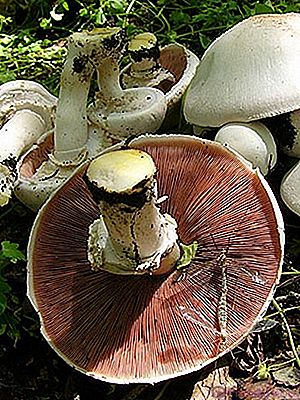



How to include them in your diet
Due to their mild taste and soft texture, mushrooms will be an excellent addition to a variety of dishes.
Both their caps and legs are edible and you can eat them cooked or raw.
Here are some tips on how to include them in your diet:
- Chop them up and add them to your favorite salad.
- Fry them in olive oil with garlic, rosemary, salt and pepper, using as a delicious side dish.
- Add them to the roast along with other vegetables.
- Cook them with scrambled eggs or add to an omelet for a healthy breakfast.
- Fry them at 175 ° C with rosemary and thyme sprigs for a crispy snack.
- Saute them with carrots, leeks, garlic and onions and boil them in water for a hearty and healthy mushroom soup.
You can also buy the powder form and add it to baked goods.
False mushroom food poisoning
Even proven mushrooms can cause poisoning if they are harvested in the wrong place. These are the sides of large roads, areas near industrial facilities, landfills. Mushrooms, like a sponge, absorb toxic substances, including carcinogens.
Having studied the description of the places where the false forest mushroom grows, look at the photo of this specimen in natural conditions.

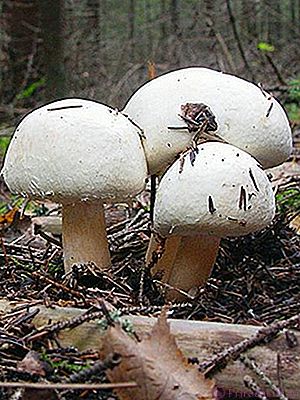


It is almost impossible to determine the presence of toxins in it at home.
Another nuance to remember: these mushrooms are dangerous to pickle and roll up for the winter. If they are undercooked, undersalted, or rolled up in a leaky can, botulinus bacteria will begin to develop inside the product.They cause severe food poisoning that can lead to further health problems. In the factory, mushrooms undergo heat treatment, which destroys pathogenic bacteria.
It is not worth mentioning that one toxic champignon can turn all preservation into a poisonous product.
In order to find a dangerous "neighbor" in time, having studied the descriptions given earlier, take another look at the photos of false mushrooms that resemble champignons.
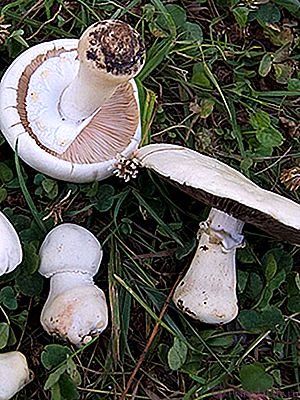
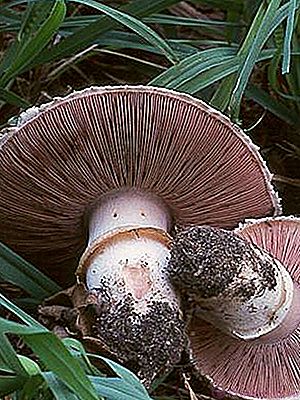
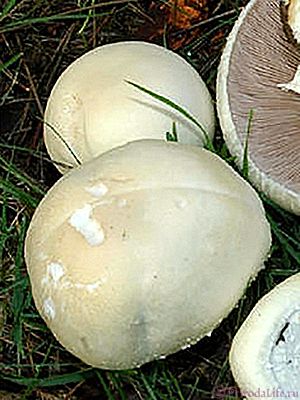
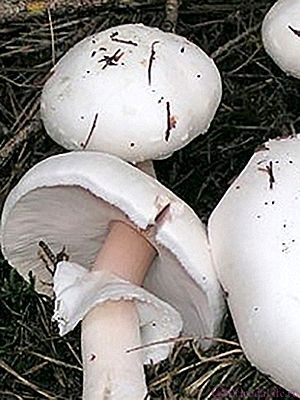
Most of them surpass in severity the usual toxicoinfections. Children and people with weakened health are especially acutely tolerated by the ingress of toxic substances into the blood.
The degree of poisoning with cooked false champignon depends on which mushrooms have skillfully "disguised" themselves as it. If it is yellow-skinned, variegated, Californian species or white fly agaric, symptoms may appear within a couple of hours. Nausea and stomach pains are the reason for immediate medical attention.
It is much more difficult to define pale toadstool poisoning. The malaise does not appear earlier than after 8 hours, and sometimes - in 1-2 days after eating it.
Growing at home and in the country
It is possible to breed these fruits both at home, having allocated a dark ventilated corner for this, and in the country, by setting aside a plot in a shaded place under the open sky. The key is to use the right technology in every case.
For cultivation in the country you need compost. The first step in soil preparation is to soak dry straw (grass) in water. This process takes approximately four days. Then you need to collect manure and spread it on a layer with wet straw. Every four days, the tightly compacted layers must be shoveled. After 15-17 days, the compost is ready for sowing.
The next step is to transfer the prepared substrate into a container (for example, into a wooden box). The layers need to be poured with mycelium, then everything must be mixed and compacted. Then water and take to the darkest place of the site. After a couple of days, when a white mycelium net appears, you can sprinkle it on top with a thin layer of a mixture of earth and peat (in half).
If all the procedures are performed correctly, then on the 25–35th day the heads of the first mushrooms will appear.
In order to grow mushrooms at home, you will at least need a basement or cellar.
 You need to grow fruits in the same boxes and with the same soil as in the summer cottage method. But it's worth noting that the basement cultivation method is more painstaking.
You need to grow fruits in the same boxes and with the same soil as in the summer cottage method. But it's worth noting that the basement cultivation method is more painstaking.
The first condition is good ventilation. The decomposing compost gives off a large amount of carbon dioxide, which is very much disliked by royal mushrooms. If necessary, you will have to buy an air filter.
The second is lighting. Many people think that special lighting is needed for optimal mushroom cultivation, but this is not the case. Light does not play a big role in this process.
The third is temperature and humidity. In summer, the required heat level can be regulated by ventilation. But to maintain high humidity, you need to periodically spray the contents of the boxes. It is better to purchase instruments for accurate measurement of all indicators, because the further harvest will depend on this.
Common champignon
We have the first mushrooms to climb, or real (Agaricus campestris). They are also called meadow mushrooms or peppers. They are found in a "witch circle" on the lawn in front of the house, in heaps in open places. Most of the site we have tinned, they have expanse.
In the literature, they write that ordinary champignons grow on rich manured soil, but ours, apparently, do not know: there is not a trace of rich soil here, red clay is covered with a 5-10-centimeter layer of forest soil. By the way, on the lawn where the calves are grazed, I have never seen champignons. "Wrong" they are with us. But this makes them just as tasty.
In the "witch circle" the mushrooms are disciplined: they pop up somehow almost simultaneously - very convenient, just for the roast it turns out.In other places, where they grow in small groups, discipline is not good: they are of different sizes, today they are alone, in three days they are different. If the very solitary ones got out, we leave them to multiply.
Ordinary champignons on the lawn look prettier than in a store: their hats are white, bright, with age, as they grow and unfold from hemispherical to flat, they change color to gray-brownish. The plates, on the other hand, change their color from pinkish, through pink-brown and brownish to dark brown. It is not recommended to use mushrooms in the version of dark brown plates.
In very young champignons-balls, the lower part of the cap is covered with a white blanket attached to the leg. With the growth of the mushroom, the veil breaks, a ring remains on the stem, and some scraps can be observed along the edge of the cap.
Common champignons are found throughout Russia, except for the Far North and bear fruit from May to November, so you can already start mushroom hunting.
The aroma of natural champignons, of course, cannot be compared with the smell of artificially grown mushrooms. You can even look for champignons by smell, if your sense of smell allows.
Common champignon (Agaricus campestris). Lesnik
Description
The double-peeled champignon is differentiated by colors:
White
Brown
Cream
The latter is also called "royal" and is not found in the wild, only cultivated.
Spherical, with strongly curved edges. The surface is smooth and dry. Scaly growths (remnants of bursting velum) can be observed on it.
Also, fragments of the private bedspread remain under the hat. Typically, the caps of double-pore champignons are small (reaching a maximum of 8 cm in diameter).
Leg
Reaches a maximum of 10 cm in height. It can grow quite thick - up to 4 cm in diameter. Mature mushrooms have a cavity in the stem. On the surface of the leg, closer to the cap, there is a ring-shaped formation, which is the remains of velum.
The mushroom hymenophore consists of a lamellar layer. In young specimens, the plates are pinkish, and in mature ones, they are purple-brown.
Pulp
Dense consistency, white, changing color to reddish when cut. The smell of the pulp is normally pleasant mushroom. If the cultivation technology is violated, the champignon begins to emit an ammonia smell.
Spreading
- Earlier, we already mentioned that these specimens prefer to live in high-quality fertilized soil, which is why they are found in the backyards of the stables. Also, the growth captures farms, greenhouses, roadsides in fields and near city roads. Champignons love trenches and grooves, gardens, fields next to agricultural areas.
- It is extremely rare and almost impossible to meet representatives of this group in forest belts. If, after cleaning, people throw out the remains of the mushrooms in a certain place, it is quite possible that soon the descendants of already eaten mushrooms will appear here. They take root well, they can exist in a variety of places.
- A distinctive characteristic of these specimens is considered to be compact overall characteristics, as well as the rounded top format and the meatiness of the soft part. The hat stays unopened longer. Distinctive features are lost after a generation, after which these descendants cannot be distinguished from other two-pore representatives.
How not to confuse champignons with poisonous mushrooms?
There are also similar species, differing in small details, which are not very interesting for a simple mushroom picker. The main thing is to learn by heart the signs of poisonous mushrooms, with which champignons at first glance can be confused (you cannot confuse the second one!).
The mushroom family has its own outcasts, which are categorically not recommended to use.
Champignon yellow-skinned or reddish, which is also called yellow-skinned peppers. Nothing particularly yellow when looking at the mushroom is not found, the caps are similar to the field champignon, and to the forest, and to the double-pore, and there is nothing to say about the two-ring mushroom with its littered caps.
A striking distinguishing feature is the smell - it stinks disgustingly with carbolic acid. Or phenol, which is the same thing. For those who do not know how carbolic acid stinks - a nasty chemical smell. When heat treated, it increases. If everything is fine with the sense of smell, the mushrooms will be thrown away even during the harvesting process, in extreme cases - during the cooking process.
Another striking distinguishing feature is a noticeable yellowing of the cap when pressed. The base of the leg quickly turns bright yellow when pulled out. That is, in all places where the mushroom has been touched, it noticeably turns yellow, over time these places become brownish.
Such a poisonous mushroom grows throughout the forest zone of the European part of Russia, I came across among field mushrooms. Occurs from the second half of summer until autumn.
Young champignons can be confused with a pale toadstool, again - when viewed from above and at a young age, when the mushroom caps are white. The most characteristic differences between the pale toadstool and the champignons are the volva, which covers the base of the leg, white plates and a white pulp that does not change color at the break.
Therefore, you need to be careful with very young pure white mushrooms. It is better not even to take them at all, if there is no complete certainty that these are champignons. With age, the caps of the pale toadstool acquire olive or brownish shades. The plates always remain white.
I have come across pale toadstools in places where field and two-ring champignons grow. And they smell like mushrooms quite nicely, which is the most offensive! Fruiting from early summer to mid-autumn.
Even at a young age, champignons can be confused with white amanita. Vivid differences - the fly agaric has an unpleasant odor, tuberous base of the leg and a volva, in this it is very similar to a pale toadstool. The entire mushroom is white, both intact and after damage. It grows in early summer in both coniferous and mixed forests.
The most important safety rule when picking mushrooms is "not 100% sure - don't take it!" - must be strictly observed.
Champignon yellow-skinned or reddish. gribowiki Sveklon White fly agaric. redbras
Additionally, I would like to remind you that mushrooms grow quickly and absorb a lot of carcinogenic things that happened in the soil nearby. So roadsides, neighborhoods of large enterprises and, in general, all ecologically unhealthy places can make even completely harmless mushrooms poisonous. Take care of yourself and your loved ones!
Evaluation of taste, medicinal properties, benefits and possible harm
The calorie content of fresh peppers is 27 kcal per 100 grams of product. Fresh mushrooms contain a whole list of vitamins B, E, PP and others. In addition, they also contain useful trace elements: calcium, potassium, manganese, zinc, copper, iron, phosphorus, about 20 essential amino acids. The high-quality protein found in mushrooms is an excellent alternative to meat protein, which the body uses to build cells.
Other useful properties of champignons:
- normalization of the activity of the cardiovascular system;
- lowering the level of "bad" blood cholesterol;
- removes salts of heavy metals;
- mushrooms contain antioxidant substances that fight free radicals.
- mushroom infusion is used to treat wounds;
- in the treatment of diabetes mellitus to lower blood sugar levels;
- folk healers used oven extract to fight typhoid fever.
Doctors warn that it is forbidden to eat any mushrooms for children under 12 years old, pregnant and lactating women, people with exacerbations of chronic diseases of the gastrointestinal tract. Do not forget that mushrooms contain chitin (especially a lot of it in the legs), which is very difficult to digest. Mushrooms are a sponge, they quickly absorb salts of heavy metals, pesticides and nitrates, harmful substances. You should not pick mushrooms near major roads, factories and factories. This is not necessary, because today in stores there is a huge selection of safe bakers grown in an industrial environment.

